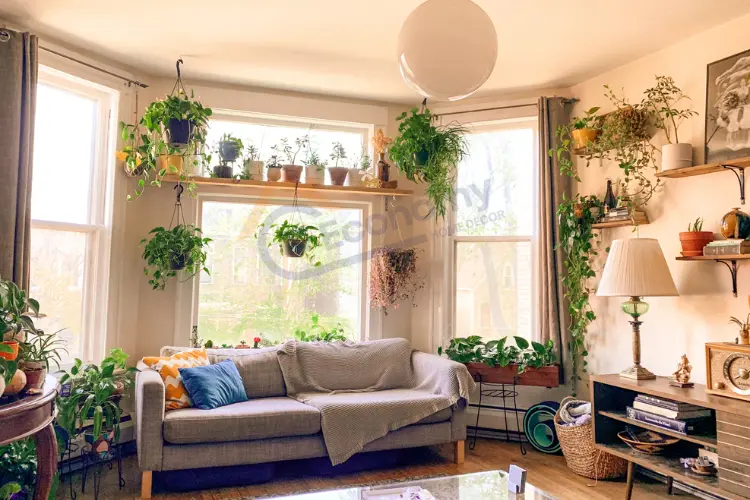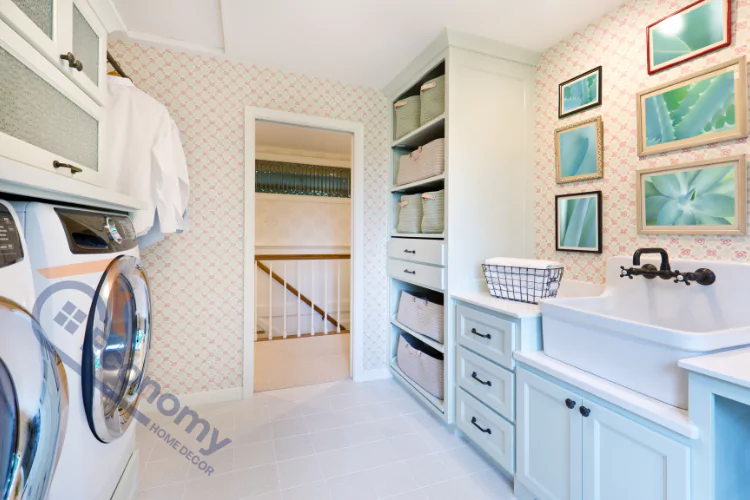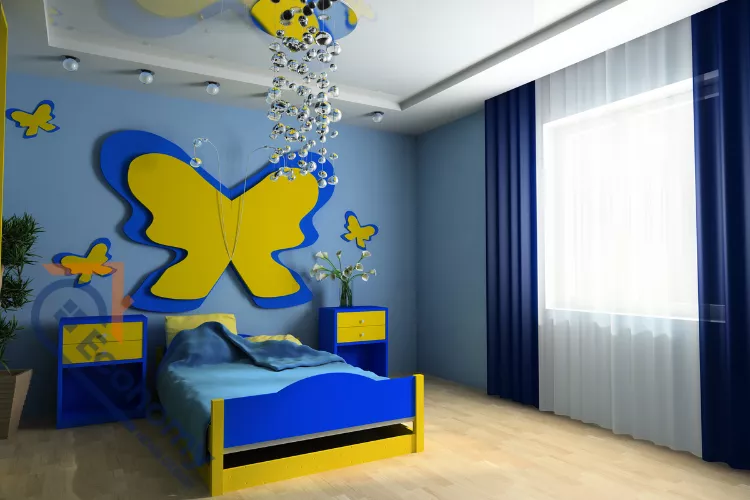Creating a beautiful home doesn’t have to come at the expense of our planet. With growing environmental awareness, more homeowners are asking what are some eco-friendly home decor ideas that can help them reduce their carbon footprint while maintaining style and comfort. Sustainable home decorating combines aesthetic appeal with environmental responsibility, proving that you can have both beauty and conscience in your living space.
The movement toward eco-friendly home decor has gained tremendous momentum as people become more conscious of their environmental impact. By choosing sustainable materials, repurposing existing items, and supporting eco-conscious brands, you can create a home that reflects your values while contributing to a healthier planet. This comprehensive guide will explore numerous sustainable decorating strategies that are both practical and stylish.
Key Takeaways
Creating an eco-friendly home through sustainable decorating practices offers numerous benefits for both homeowners and the environment. Understanding what are some eco-friendly home decor ideas empowers you to make choices that reflect your values while creating a beautiful, healthy living space.
The most impactful strategies include:
- Choosing natural, renewable materials like bamboo, cork, and reclaimed wood
- Repurposing and upcycling existing items to reduce waste
- Incorporating energy-efficient lighting and maximizing natural light
- Adding air-purifying plants and natural decorative elements
- Selecting low-VOC paints and organic textiles
- Shopping secondhand and vintage for unique, sustainable pieces
- Using natural cleaning products to maintain your eco-friendly decor
These approaches not only benefit the environment but often provide superior quality, unique character, and long-term value compared to conventional decorating choices.
Understanding Eco-Friendly Home Decor
Eco-friendly home decor refers to decorating practices and products that minimize environmental impact through sustainable materials, ethical production methods, and reduced waste. This approach encompasses everything from choosing furniture made from reclaimed wood to selecting organic textiles and non-toxic paints. The concept extends beyond just the materials themselves to include the entire lifecycle of products, from manufacturing to disposal.
When considering what are some eco-friendly home decor ideas, it’s important to understand that sustainability in home decorating involves several key principles. These include using renewable resources, supporting local artisans and manufacturers, choosing durable items that won’t need frequent replacement, and selecting products with minimal packaging. Additionally, eco-friendly decor often involves repurposing and upcycling existing items rather than purchasing new ones.
The benefits of eco-friendly home decor extend beyond environmental protection. Sustainable materials often provide better indoor air quality, as they typically contain fewer harmful chemicals and volatile organic compounds (VOCs). Many eco-friendly products are also more durable and long-lasting, making them cost-effective investments over time. Furthermore, sustainable decor often supports fair trade practices and local economies, creating positive social impact alongside environmental benefits.
Sustainable Materials for Home Decoration
Natural and Renewable Materials
When exploring what are some eco-friendly home decor ideas, natural materials should be at the top of your list. Bamboo stands out as an excellent choice due to its rapid growth rate and versatility. This renewable resource can be used for flooring, furniture, decorative screens, and even textiles. Bamboo products are naturally antimicrobial and incredibly durable, making them practical for various home applications.
Cork is another fantastic sustainable material that’s gaining popularity in home decor. Harvested from cork oak trees without harming the tree itself, cork can be used for flooring, wall tiles, and decorative accents. Its natural properties include being water-resistant, fire-retardant, and naturally antimicrobial. Cork products also provide excellent insulation properties, potentially reducing energy costs.
Reclaimed wood offers both environmental benefits and unique aesthetic appeal. Using reclaimed wood prevents old timber from ending up in landfills while providing your home with pieces that have character and history. Whether used for furniture, accent walls, or decorative elements, reclaimed wood adds warmth and authenticity to any space. Each piece tells a story, making your decor truly one-of-a-kind.
Organic and Non-Toxic Options
Organic textiles play a crucial role in eco-friendly home decor. Organic cotton, hemp, and linen are excellent choices for curtains, bedding, and upholstery. These materials are grown without harmful pesticides and chemicals, making them safer for your family and the environment. Hemp, in particular, is incredibly durable and becomes softer with each wash, making it an excellent long-term investment.
Natural latex and organic wool are superior alternatives to synthetic materials for mattresses, pillows, and cushions. These materials are biodegradable, naturally hypoallergenic, and free from harmful chemicals. They also provide excellent comfort and durability, often outlasting their synthetic counterparts while maintaining their shape and support over time.
Repurposing and Upcycling Ideas
Creative Furniture Transformations
One of the most impactful answers to what are some eco-friendly home decor ideas involves transforming existing furniture rather than buying new pieces. Furniture upcycling not only reduces waste but also allows you to create unique, personalized pieces that perfectly fit your space and style. Simple techniques like sanding, painting, or reupholstering can completely transform outdated furniture into stunning focal points.
Consider turning an old ladder into a bookshelf, transforming wooden crates into storage ottomans, or converting a vintage suitcase into a coffee table. These projects require minimal investment while maximizing creativity and environmental impact. Chalk paint and milk paint are excellent eco-friendly options for furniture refinishing, as they contain fewer harmful chemicals than traditional paints.
Repurposing materials from other sources can yield surprising results. Old doors can become headboards or room dividers, while vintage windows can be transformed into mirrors or photo frames. Pallets, often discarded by businesses, can be converted into coffee tables, planters, or wall art. The key is to see potential in items that others might consider waste.
DIY Decor Projects
Creating your own decorative elements is both economical and environmentally friendly. Mason jar projects are incredibly versatile, allowing you to create everything from lighting fixtures to storage solutions. Glass jars can be transformed into pendant lights, candle holders, or planters, giving new life to containers that might otherwise be discarded.
Textile scraps can be woven into rugs, sewn into throw pillows, or braided into decorative baskets. This approach not only reduces textile waste but also allows you to create custom pieces that perfectly match your decor. Similarly, old magazines and newspapers can be rolled into decorative bowls, woven into baskets, or used for decoupage projects.
Energy-Efficient Lighting Solutions
LED and Solar Options
LED lighting represents one of the most significant advances in energy-efficient home lighting. When considering what are some eco-friendly home decor ideas, LED bulbs should be a priority due to their exceptional energy efficiency and longevity. LED bulbs use up to 80% less energy than traditional incandescent bulbs and can last 25 times longer, significantly reducing both energy consumption and waste.
Solar-powered lighting options are perfect for outdoor spaces and areas with abundant natural light. Solar garden lights, pathway markers, and even indoor solar lights can provide illumination without drawing from the electrical grid. These systems have become increasingly sophisticated, offering various styles and brightness levels to suit different decorative needs.
Smart lighting systems allow for precise control over energy consumption while providing convenience and ambiance. Programmable LED systems can be dimmed, colored, and scheduled to optimize energy use while creating the perfect atmosphere for any occasion. Many smart bulbs can also be controlled remotely, ensuring lights aren’t left on unnecessarily.
Natural Light Maximization
Maximizing natural light reduces the need for artificial lighting while creating a more pleasant living environment. Strategic mirror placement can significantly increase the amount of natural light in a room by reflecting sunlight to darker areas. Large mirrors positioned opposite windows or in narrow hallways can make spaces feel larger and brighter.
Light-colored surfaces and reflective materials help bounce natural light throughout your home. Choosing light paint colors, glossy finishes, and metallic accents can amplify existing natural light. Glass and crystal decorative elements also help distribute light while adding elegance to your decor.
Indoor Plants and Natural Elements
Air-Purifying Plants
Indoor plants are among the most effective and beautiful answers to what are some eco-friendly home decor ideas. Beyond their aesthetic appeal, many houseplants actively improve indoor air quality by removing toxins and producing oxygen. Snake plants, peace lilies, and spider plants are excellent choices for beginners, as they’re low-maintenance while providing significant air-purifying benefits.
Vertical gardens and living walls maximize the impact of plants in smaller spaces. These installations can serve as stunning focal points while dramatically improving air quality. Herb gardens in kitchens provide both decorative appeal and practical benefits, allowing you to grow fresh ingredients while adding natural beauty to your cooking space.
Large plants like fiddle leaf figs, monstera deliciosa, and rubber trees can serve as living sculptures, providing dramatic visual impact while improving air quality. These statement plants can anchor a room’s design while contributing to a healthier indoor environment. Grouping plants of different sizes and textures creates dynamic, natural displays that evolve and grow over time.
Natural Decorative Elements
Incorporating natural elements beyond plants adds organic beauty to your home. Stones, crystals, and minerals can serve as decorative accents while connecting your space to the natural world. These elements require no maintenance while providing lasting beauty and often carrying symbolic meaning.
Driftwood, branches, and dried flowers can be arranged into stunning displays that celebrate nature’s artistry. These elements can be collected during outdoor adventures, making them meaningful additions to your decor. Seasonal arrangements allow you to change your decor naturally throughout the year, reflecting the changing seasons and maintaining visual interest.
Water-Based and Low-VOC Paints
Choosing Safe Paint Options
Low-VOC and zero-VOC paints are essential components of eco-friendly home decor. Traditional paints release volatile organic compounds that can cause health problems and contribute to indoor air pollution. When exploring what are some eco-friendly home decor ideas, selecting safe paint options should be a priority for any renovation or refresh project.
Natural paint alternatives like milk paint, clay paint, and limewash offer beautiful finishes while being completely non-toxic. These traditional paint types often provide unique textures and colors that can’t be achieved with conventional paints. They’re particularly effective for creating rustic, authentic looks that align with sustainable design principles.
Color choices can also impact your home’s energy efficiency. Light colors reflect heat and light, potentially reducing cooling costs in warm climates. Conversely, darker colors absorb heat, which might be beneficial in cooler regions. Choosing regionally appropriate colors can contribute to your home’s overall energy efficiency.
Sustainable Textiles and Fabrics
Organic and Recycled Options
Organic textiles form the foundation of eco-friendly soft furnishings. When considering what are some eco-friendly home decor ideas, organic cotton, hemp, and linen should be prioritized for curtains, bedding, and upholstery. These materials are produced without harmful pesticides and chemicals, making them safer for your family and the environment.
Recycled fabric options are increasingly available and offer excellent ways to reduce textile waste. Rugs made from recycled plastic bottles, curtains from recycled polyester, and upholstery from reclaimed materials provide stylish options while addressing environmental concerns. These products often match or exceed the durability of conventional textiles while reducing environmental impact.
Vintage and secondhand textiles offer unique character while reducing demand for new production. Antique linens, vintage quilts, and retro fabrics can add personality and history to your decor while being environmentally responsible. These items often feature craftsmanship and quality that’s difficult to find in modern mass-produced textiles.
Eco-Friendly Flooring Options
Sustainable Flooring Materials
Bamboo flooring represents one of the most sustainable flooring options available. This rapidly renewable resource can be harvested without killing the plant, making it an excellent alternative to traditional hardwood. Bamboo flooring is incredibly durable, water-resistant, and available in various styles and colors to suit different design preferences.
Cork flooring offers unique benefits including natural antimicrobial properties, excellent insulation, and comfortable underfoot feel. Cork is harvested from the bark of cork oak trees without harming the tree, making it a truly renewable resource. Its natural properties include being hypoallergenic and naturally resistant to insects and mold.
Reclaimed hardwood flooring prevents valuable timber from ending up in landfills while providing beautiful, character-rich flooring. Each plank has a unique history and patina that can’t be replicated in new materials. Reclaimed wood flooring often features tighter grain patterns and superior durability compared to newly harvested timber.
Area Rugs and Natural Fiber Options
Natural fiber rugs made from jute, sisal, and hemp provide excellent sustainable flooring options. These materials are biodegradable, durable, and often less expensive than synthetic alternatives. Natural fiber rugs also provide excellent texture and visual interest while being easy to maintain and replace when necessary.
Recycled material rugs transform waste into beautiful functional art. Rugs made from recycled plastic bottles, old clothing, or fabric scraps offer unique patterns and colors while addressing waste management concerns. These products demonstrate how recycling can create beautiful, functional items for the home.
Secondhand and Vintage Finds
Thrifting for Home Decor
Thrift shopping provides excellent opportunities to find unique decorative items while reducing demand for new production. When exploring what are some eco-friendly home decor ideas, secondhand stores, estate sales, and online marketplaces offer treasure troves of vintage and gently used items that can enhance your decor while being environmentally responsible.
Vintage furniture often features superior construction and materials compared to modern mass-produced items. Mid-century modern pieces, antique wooden furniture, and vintage metal items can serve as stunning focal points while being more sustainable than new alternatives. These pieces often appreciate in value over time, making them excellent investments.
Unique decorative objects found in thrift stores can add personality and character to your home. Vintage artwork, antique vases, retro lighting fixtures, and collectible items provide conversation pieces while being environmentally conscious choices. The hunt for perfect pieces can become an enjoyable hobby that supports your decorating goals.
Restoration and Care
Properly caring for vintage and secondhand items ensures they continue to serve their decorative purpose for years to come. Cleaning and restoration techniques can transform tired-looking pieces into stunning decorative elements. Simple actions like polishing wood, cleaning metal, or reupholstering cushions can dramatically improve the appearance of secondhand finds.
Professional restoration services can help with more complex projects, ensuring valuable pieces are properly preserved. This investment often proves worthwhile for high-quality vintage items that would be expensive to replace with new alternatives. Proper care and maintenance extend the life of all home furnishings, maximizing their environmental benefits.
Green Cleaning Products for Maintenance
Natural Cleaning Solutions
Eco-friendly cleaning products are essential for maintaining your sustainable home decor. When considering what are some eco-friendly home decor ideas, the products you use to clean and maintain your decorative elements are just as important as the items themselves. Natural cleaning solutions protect both your family’s health and the environment while effectively maintaining your home’s beauty.
Homemade cleaning solutions using ingredients like vinegar, baking soda, and lemon juice provide effective, non-toxic alternatives to commercial cleaners. These ingredients are inexpensive, readily available, and safe for use around children and pets. They’re particularly effective for cleaning natural materials like wood, stone, and metal without causing damage.
Plant-based commercial cleaners offer convenient alternatives when homemade solutions aren’t practical. These products use renewable ingredients and biodegradable formulations that break down safely in the environment. Many eco-friendly cleaning brands also use recyclable packaging and sustainable manufacturing processes.
Cost-Effective Eco-Friendly Solutions
Budget-Friendly Options
Creating an eco-friendly home doesn’t require a large budget. When exploring what are some eco-friendly home decor ideas, many sustainable options are actually more economical than conventional alternatives. DIY projects using recycled materials can provide stunning results at minimal cost while being environmentally responsible.
Seasonal decorating using natural elements like branches, leaves, and flowers costs very little while providing constantly changing beauty. These elements can be collected during walks or from your own yard, making them essentially free while connecting your home to the natural world and seasonal cycles.
Energy-efficient upgrades like LED bulbs and programmable thermostats require initial investment but provide long-term savings through reduced energy consumption. These improvements often pay for themselves within a few years while providing ongoing environmental benefits.
Long-term Investment Benefits
Durable, high-quality items may cost more initially but provide better value over time. Solid wood furniture, natural fiber textiles, and well-made decorative items often last decades longer than cheaper alternatives, making them more economical in the long run. This approach also reduces waste by avoiding frequent replacements.
Energy savings from eco-friendly choices compound over time, providing ongoing financial benefits. Efficient lighting, proper insulation, and strategic use of natural light can significantly reduce utility bills while creating a more comfortable living environment.
Comparison of Eco-Friendly Materials
| Material | Sustainability Rating | Durability | Cost | Best Uses |
|---|---|---|---|---|
| Bamboo | Excellent | High | Moderate | Flooring, furniture, textiles |
| Cork | Excellent | High | Moderate | Flooring, wall tiles, accessories |
| Reclaimed Wood | Excellent | Very High | High | Furniture, accent walls, beams |
| Organic Cotton | Good | Moderate | Moderate | Bedding, curtains, upholstery |
| Hemp | Excellent | Very High | Moderate | Textiles, rope, accessories |
| Natural Latex | Good | High | High | Mattresses, pillows, cushions |
| Recycled Materials | Excellent | Varies | Low to Moderate | Rugs, decorative objects, storage |
Conclusion
Transforming your home with eco-friendly decor ideas creates a space that’s both beautiful and environmentally responsible. Understanding what are some eco-friendly home decor ideas empowers you to make choices that benefit your family’s health, reduce environmental impact, and often provide superior quality and value compared to conventional alternatives.
The journey toward sustainable home decorating doesn’t require dramatic changes or significant investment. Start with small steps like adding plants, switching to LED lighting, or incorporating secondhand finds. Gradually build your eco-friendly approach by choosing sustainable materials for larger projects and prioritizing quality over quantity in your purchasing decisions.
Remember that eco-friendly home decor is about more than just the products you choose, it’s about adopting a mindset that values sustainability, creativity, and mindful consumption. By embracing these principles, you create a home that reflects your values while contributing to a healthier planet for future generations. Every sustainable choice you make, no matter how small, contributes to positive environmental impact while creating a more beautiful, healthy, and meaningful living space.







